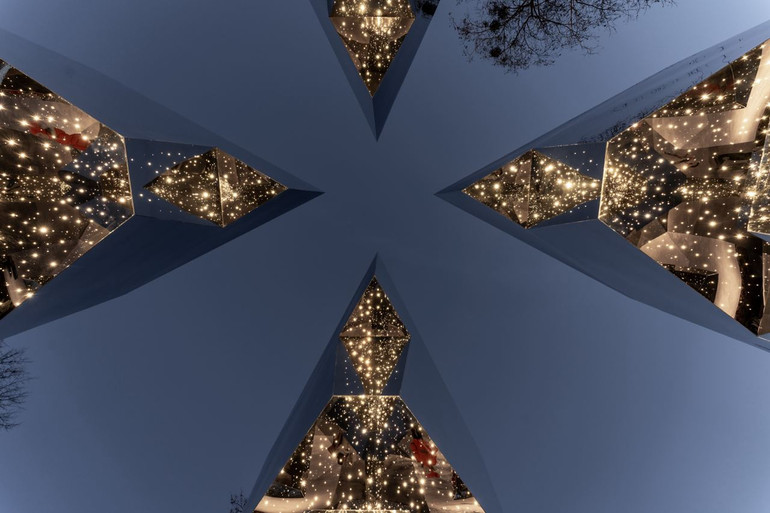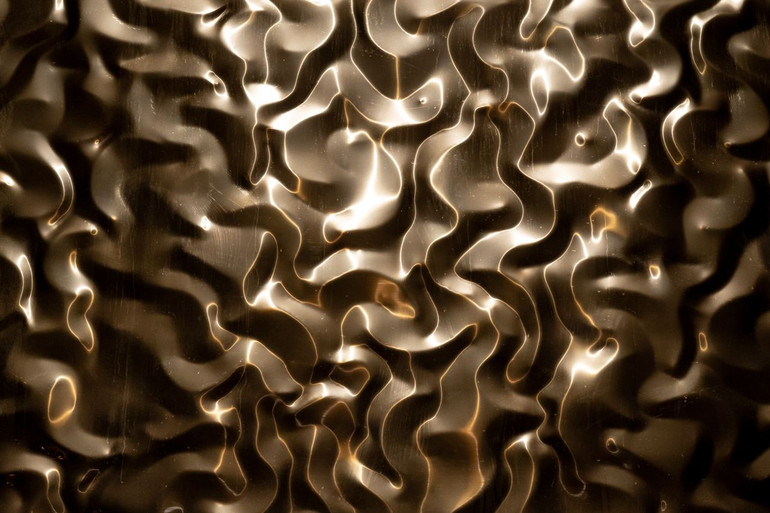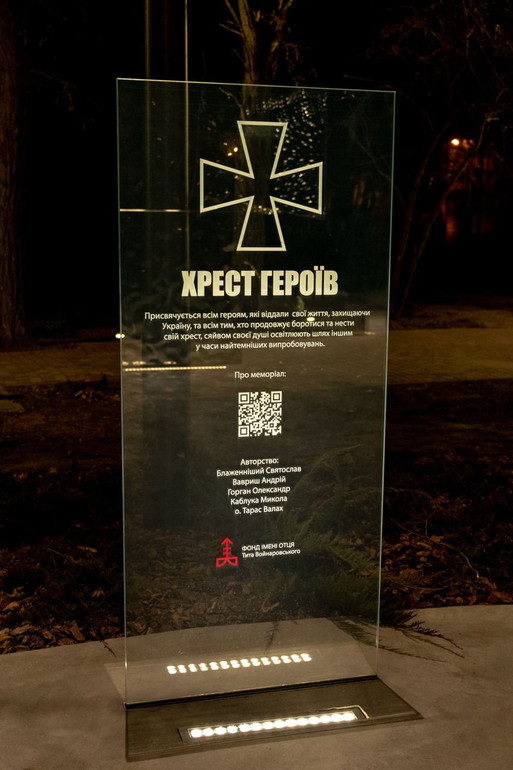How we remember tragedies: non-traumatic immersiveness in monuments – Views
[ad_1]
Fixing memory became an important part of our existence in the conditions of war. Ukrainian artists and cultural figures create in the context of traumatic events, document, interpret, express internal states and call for dialogue. It is important for me to involve the viewer in the commemoration through the objects, to immerse them in the common and at the same time personal memory of the events, but not to traumatize them. The Kabluka Light & Digital Sculptures team and I met this need by working on the Cross of Heroes project.
The Cross of Heroes is a new type of memorial in memory of soldiers who died defending Ukraine. The concept of this installation was formed on three pillars: commemoration, immersion and non-traumaticity. This project incorporated all possible methods to achieve our goals: working with shared memory, living trauma in an artistic form, modern technologies, ancient symbols. But they were able to collect and get what you see in Vyshgorod only thanks to the foundation of three principles.
Commemoration of tragic events
The creation of places of commemoration in Ukraine is a young process that has only begun to recover from the memorials of the last century. Pompous Soviet monuments with pedestals, dedicated to a specific person, have nothing in common with modern approaches to fixing collective memory. They are distant, do not encourage reflection, are directed only to the fact of mentioning events or people.
The commemoration of the new type is different. Living, not memory, is the basis of the concept, and this is what works for Ukraine 100%. After all, we live in tragic events that have not yet ended. The new memorials work with space, with all ways of perceiving reality, with the feeling of the here and now. Visual and sound effects, the ability to interact with the object – all this is aimed at sensations in the first place, memories arise later, as a result of complete immersion in the installation.
The concept of this installation was formed on three pillars: commemoration, immersion and non-traumaticity
My reference point in the work on the Cross of Heroes was the memorial complex of the 9/11 tragedy in New York. An approach that does not simply choose a tragic or heroic figure. It is a very strong work, although it does not have literal, visual horror – everything is self-explanatory. A memorial at the exact place of the tragedy, involving visual senses and space – and pedestals are not needed. Of course, this is not a universal formula. At the same time, it works perfectly as an example for imitation and adaptation of the principles of new memorials.
Immersiveness
Immersive experience is a feeling of deep immersion in reality. If we consider this state in the context of art, then in order to achieve it, something more than static contemplation must be created. A strong immersion of a person’s consciousness with an art object is possible only in conditions of interaction. The more sensory systems are involved, the stronger will be the feeling of immersion in the reality proposed by the artist.
For example, the Reality of the Cross of Heroes is light, memories, gratitude, and unity. When I started working on the memorial, the key was to create a desire to go inside the object and become part of its idea. So we used everything.
Visual involvement begins at the stage of contemplation – the memorial merges with the environment and reflects the sun’s rays. If it is evening, then the lights around the installation lead to the entrance inside. In the Cross, a person is surrounded by mirror surfaces and shimmering, which multiplies and is felt as the infinite light of our heroes.

Immersive experience is a feeling of deep immersion in reality.
Another level of immersion is sound. In the middle of the installation, natural sounds from all regions are heard: the whisper of the Ukrainian steppes in Donetsk region, Luhansk region, the lapping of the sea in Mariupol, Odessa, Crimea, the murmur of mountain streams from the west, the sounds of the forest in the north, the murmur of rivers in central Ukraine. As a result, complete immersion takes place – the viewer is literally inside the installation, hears sounds, sees flickering lights and reflections on curved surfaces.
The desire to create such an interaction with an art object is a natural response to the peculiarities of our time. It is difficult to hold people’s attention, especially when it is a static object and a topic that is difficult to perceive. Therefore, immersive sculptures are a good way to package an important, multifaceted message using modern technologies. For memorials, immersiveness is the opposite of traditional monuments, the antonym of a warrior on a pedestal.

Textures used in the composition
Retraumatization
Third the pillar on which the principle of creating memorials of a new type exists is not trauma. No tragic images or sounds, no direct reminders of the horrors that happened and should be remembered. Of course, commemoration is needed in order not to forget the heroes and events of the past, but this is not its only function. Collective memory is also about the feeling of unity, in grief and in the hope that this will not happen again.
And the faith in what radiates the figure on the pedestal, or the terrible images of tragedies? To talk about trauma and not to traumatize, to remind and call for unity, to evoke emotion and not to frighten – these are the tasks of new memorials. Avoid retraumatization in all possible ways.

Collective memory is also about the feeling of unity, in grief and in the hope that this will not happen again.
Forcing people to relive tragedies by interacting with a memorial is cruel. Especially when this tragedy is not over yet. But a place of solace, memories, reflections and hope sounds like a necessary concept for Ukraine. Every tool and method we’ve used in Heroes’ Cross is based on this idea. Not to injure, but to immerse in a mixture of light, sound and senses, in the memory of heroes, a sense of presence, gratitude, belonging, togetherness.
Myself and the Kabluka Light & Digital Sculptures team hope that the memorial we created is just the beginning of an active process of commemorating the events of the war. Ukrainians need places of solace, not additional reasons to feel the consequences of collective trauma. Memorials of a new type are an effective response to this request and a logical development of immersive installations and commemorative art in Ukraine.
Mykola Kablukalighting designer, founder of the Expolight company.
Publications in the “View” section are not editorial articles and reflect exclusively the author’s point of view.
[ad_2]
Original Source Link











